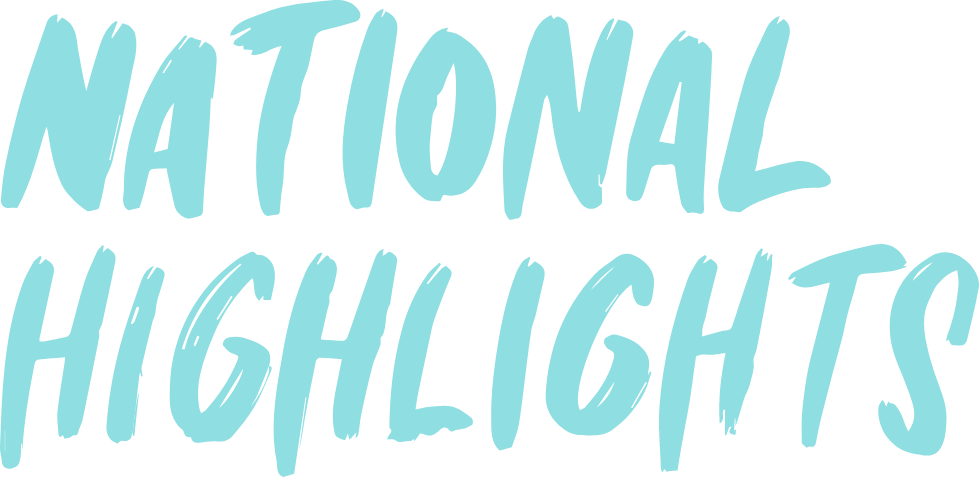

National Highlights
Updates from the Past Year at Pathways Canada

Adjusting to New Protocols
This past year hasn’t been easy, as students living in low-income communities continue being disproportionately affected by COVID-19. As we’ve entered another year of the pandemic, we continue to learn how to adapt to deliver services to students effectively. The goal remains the same, to keep students connected to their education and help them succeed throughout high school and beyond.
With lockdown restrictions varying by province based on the number of cases and public health measures, staff across the country continued pivoting. This meant they often had to balance between delivering a blend of in-person and virtual supports and monitoring sudden school openings and closings. Together, they worked on addressing the barriers faced by students by offering additional programming centered around their health and well-being, providing food supports, creating necessary connections, and more.
Students were provided with devices and tools such as laptops and accessible virtual tutoring. They attended virtual classes that taught them important life skills such as budgeting, cooking, and preparing nutritious meals, and they participated in experiential opportunities that took them outdoors. Food supports were provided, with Program Partners putting resources together to help students and their families. Students were also given the space to interact with their peers or check in with staff regularly, both virtually or in-person, to address isolation.
Pathways staff were able to find ways to quickly mobilize within and in their communities as a collective to address students' most urgent needs. They experienced how stressful this situation was, and in turn, our Program Partners also focused on ensuring that staff took care of themselves. This experience taught them that it is possible to do virtual learning and re-engage with young people while prioritizing their safety. We thank our dedicated program staff for all their hard work in continuing to deliver on our mission throughout another year of adaptation and adjustment.
Last year, we conducted a Youth Connectedness Survey for students to reflect on how they felt during the start of the pandemic. The findings suggest that Pathways students see the program as a source of ongoing support. Even when offered virtually, the program generates a sense of belonging: survey participants view time spent with Pathways as valuable, feel comfortable asking for help, and see interactions with staff as critical to achieving their personal and academic goals. The sense of connectedness to the program is clear: young people know that program staff care about their well-being and provide relevant supports.

Expanding our National Footprint
In 2019, as part of the Government Action Plan for Economic and Social Inclusion (PAGIEPS), the Quebec government delivered on its promise to support more youth living in low-income communities across the province by investing in the expansion of the Pathways to Education Program. This investment allows us to continue supporting existing program activities, addressing the unique needs of students in Quebec communities and offer programming in new communities to reach more students.
While the pandemic presented some challenges in community engagement with local partners, we adapted a blended approach in response. Local organizations have continued doing outreach and found creative ways to spread the word about the Pathways Program in schools and the broader community, both virtually and in person. Despite these challenges, we have officially launched new Pathways Program locations—in Matane, Matapédia, and Sept-Îles—all of which are now up and running. We are excited to be collaborating with our new local partners to successfully grow the program and ensure students across Quebec are equipped to succeed beyond high school.
Over the last few years, we’ve focused our attention on Indigenous communities in Canada and have explored the need for a Pathways Program location in Thunder Bay, Ontario. Our goal was to re-engage with students and work towards providing academic resources and mentoring support while ensuring their needs and expectations were being met. As the result of successful community engagement, we started a Pathways Program location in Thunder Bay, which began last fall with planning, recruitment, and outreach activities. Currently, we have virtual tutoring in place and expect to incorporate in-person mentoring activities as pandemic restrictions lift.
Read more about one of our newest program locations in Joliette, Quebec
Enhancing Program Delivery and Reach by Leveraging People, Process, Data, and Technology
Pathways is a social innovation—that is part of our DNA. For the last five years, we have taken a piloting approach to test how programming is delivered and what it needs to be so that it stays relevant for students. Since then, we’ve committed to reaching more students and explored ways to enhance our program delivery to current students.
We recently approached this by working with communities across the country to address the challenges and opportunities they’re facing. Using a pilot approach that allows us to experiment on a small scale, we examine how best to leverage people, process, data, and technology. Our work focuses on consulting and co-creating potential solutions with students, Pathways Program staff, and other community partners.
Here are a few examples of pilots we have been working on throughout the last year:
- We are currently piloting an on-demand text-based tutoring service in multiple Ontario Pathways locations to provide increased flexibility for students who are busy with part-time jobs or other commitments. The goal is to determine whether an on-demand solution could be an effective complimentary tool next to the traditional tutoring programming we provide. Using data from the technology will help identify utilization and insights into students’ use of the tool. And focus groups with participants will provide additional context and help inform decision-making around potential scale across the country.
- In an annual satisfaction survey, students at Pathways Vancouver and Surrey identified an interest in continuing virtual programming. Program operations were also challenged with high demand from students and families, exceeding their capacity to support traditionally. As a result, a virtual-only programming pilot was created, where students can access tutoring, mentoring, and one-on-one support. New processes have been developed to deliver effectively, building on what was learned through the pandemic. We are collaborating with the Program Partner to identify technology solutions that can enhance this delivery approach, collect the data required to know it is working, and evaluate the impact over the next three years.
In using a pilot approach, Pathways is able to engage with a subset of Program Partners to test theories or solutions on a smaller scale, requiring a lower initial financial and time investment, and reducing uncertainty and risk associated with introducing and implementing changes more broadly. All pilots are assessed against expected outcomes and lessons learned which also help to inform future pilots. In this way, we have reignited our capacity as a truly social innovation.

Research Highlights Over the Last Year
Impact measurement has always been central to the work we do. The Pathways Program is rooted in the collection and analysis of data to ensure it continually meets students' needs.
Third-Party Evaluation of the Pathways Program
An independent third-party evaluation was recently commissioned by Pathways Canada, per our agreement with the federal government. It examined the Pathways Program design, the services it offers, and the overall impact it had on students. The evaluation found that Pathways positively impacts high school achievement, including credit accumulation, academic performance, and graduation outcomes, and participants are more likely to graduate than the comparison group.
Additionally, the program effectively increases career-related competencies and soft skills built through years of participating in program activities. Some of the skills identified include time management, leadership, communication, organization, teamwork, and more. Acquiring these skills will give them a strong foundation for a successful future throughout high school graduation and beyond.
Another finding from the evaluation is that the Pathways Program is appropriately designed to address many of the barriers faced by youth. And the program’s model supports youth of diverse backgrounds, including racialized youth, and meets their needs—through relationship-building, financial support, flexibility, and a case-management approach.
The evaluation also found that Pathways to Education responded to the pandemic effectively. Although it presented disruptions, activities continued to run accordingly, and dedicated staff members across the country continued supporting students in numerous ways—through frequent check-ins with students and their families, financial support for food, and providing online resources. And despite the pandemic, Pathways successfully opened multiple program locations, increasing access to programming for students living in several communities in Quebec and in Thunder Bay.
A Review on Access Programs in Ontario
This review, conducted by the Higher Education Quality Council of Ontario (HEQCO), looked at how programs like Pathways to Education and the Ontario Post-Secondary Access & Inclusion Program improve post-secondary access for underrepresented students in Ontario. Some of the strengths of the Pathways to Education Program identified are:
- The program creates networks of support for students and provides guidance and social and academic support to prepare them for post-secondary education and beyond.
- It provides exposure to post-secondary and career pathways by offering support—through the application process, campus visits, and other aspects of programming.
- It uses a variety of approaches to track outcomes and demonstrate success through a combination of qualitative and quantitative methods.
This research shows that we are continuously working towards creating better outcomes for students by improving access to post-secondary education. We are proud of the tremendous work that has been accomplished over the last two decades.
